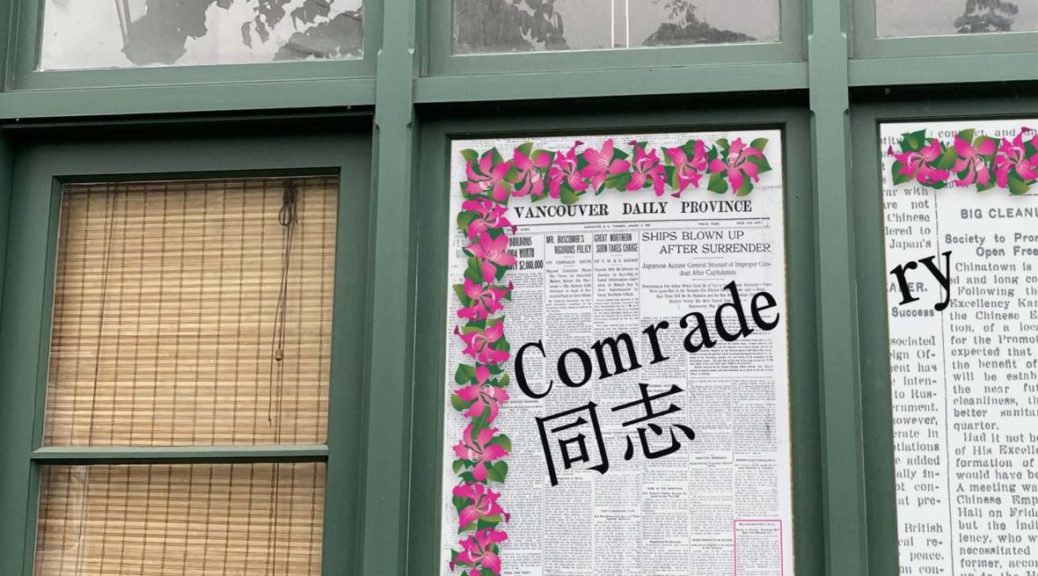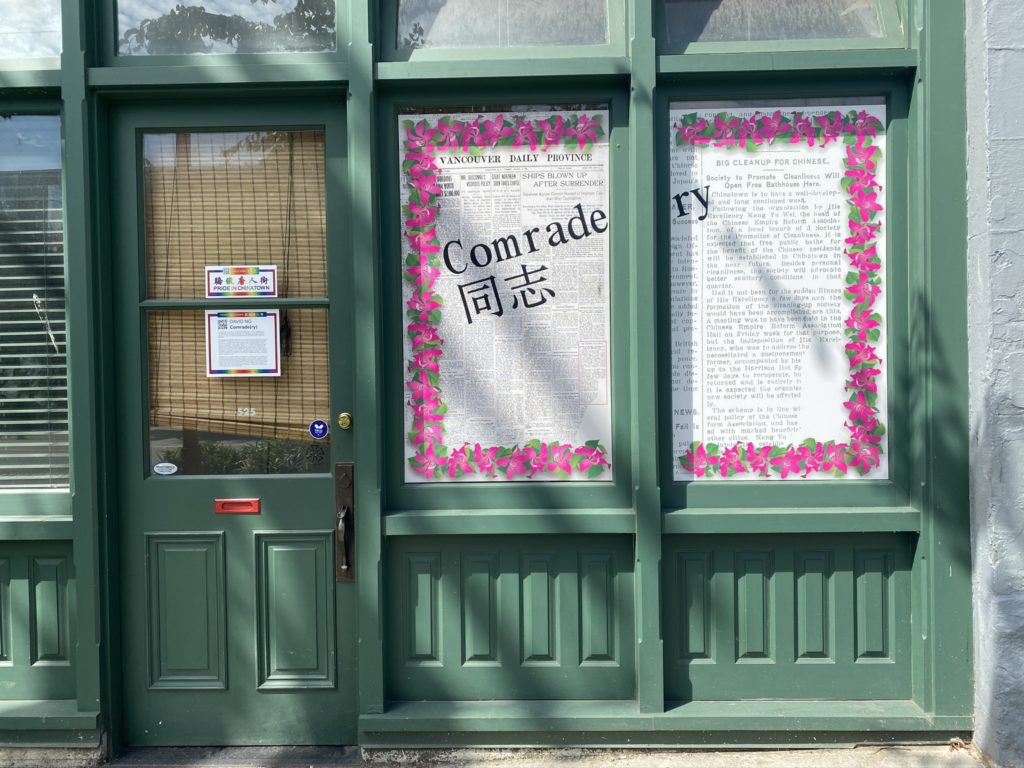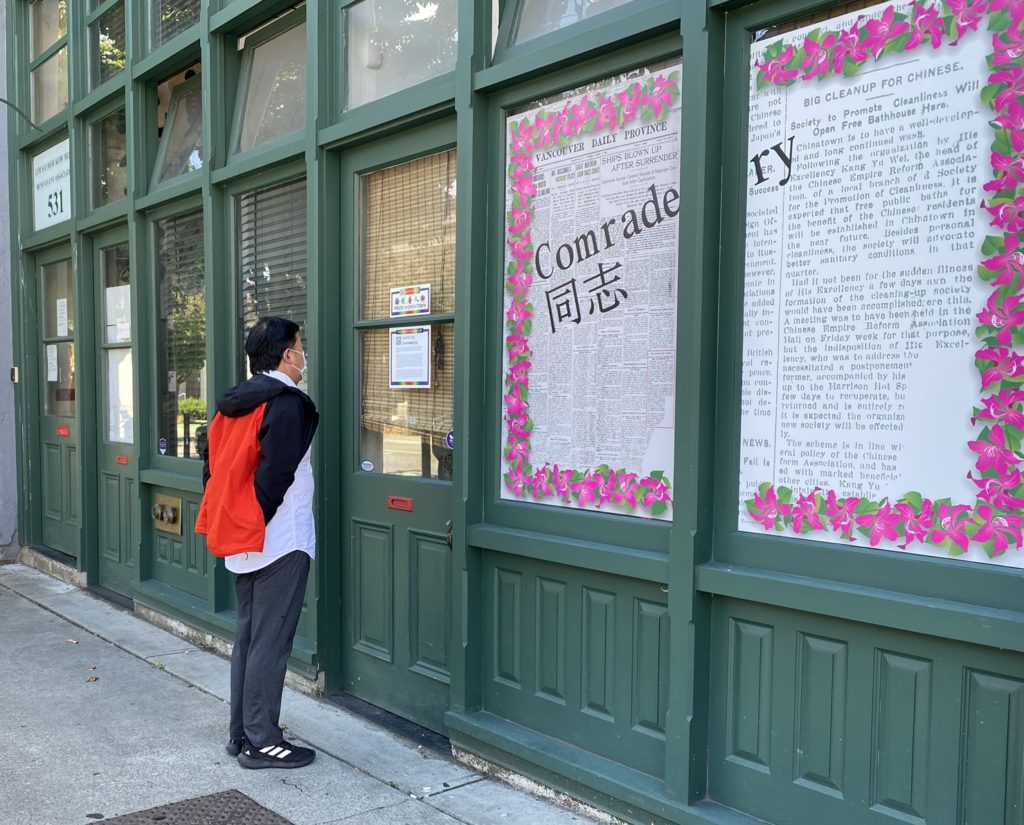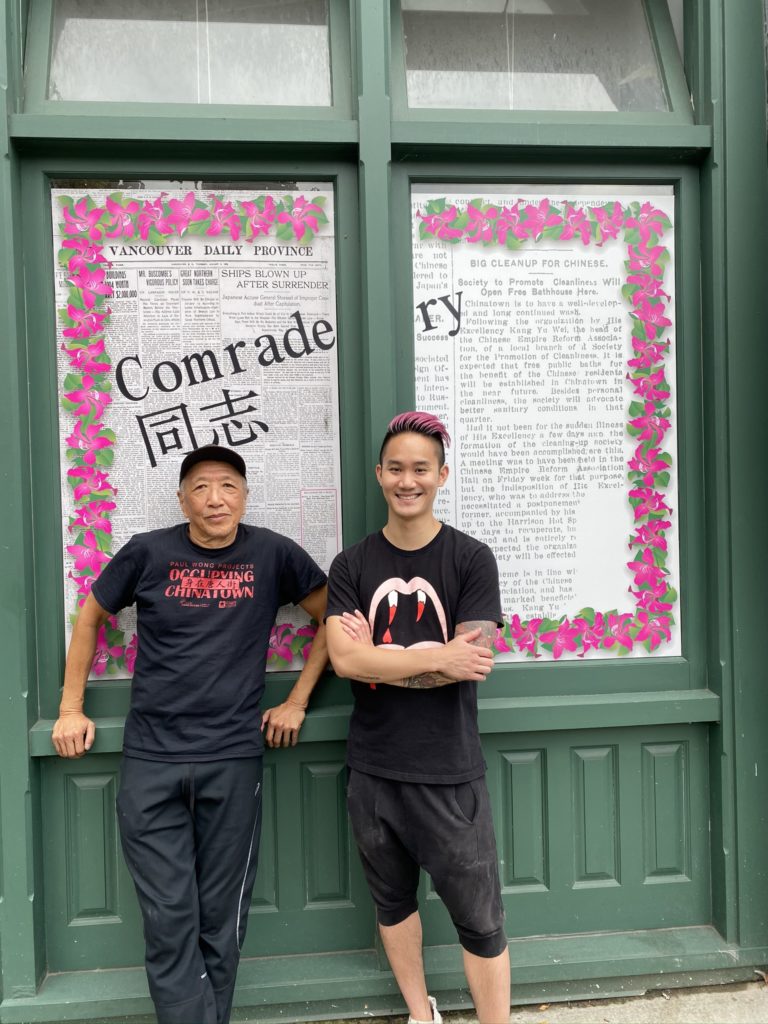
David Ng – Comrade(ry)
Location: 525 Carrall St, Vancouver, BC V6B 2J8
The racial history of Chinatown is usually taught through themes of exclusion, segregation, and indentured labour in history books. However, many Chinese people, including the artist’s family, have deep, personal connections and ancestral roots to the neighbourhood. Despite histories of segregation and exclusion, families were raised here and communities have been cultivated for generations.
This print installation is located outside of what is now the Vancouver Artist Labour Union Co-Operative 溫哥華藝文工會合作社 (VALU CO-OP) in the Lim Sai Hor Kow Mock Association building 林西河總堂九牧公所. The featured 1906 newspaper article describes a community “bathhouse” that was built in the early 20th century by the original occupants — the Chinese Empire Reform Society — to intervene on stereotypes of Chinese people as being “dirty”. The article’s racist undertones reflect the social attitudes towards Chinese people at the time, and the voices of the community are left unspoken by this newspaper narrative. If we read the article “against the grain,” we can feel the warmth of the community, and the organizing efforts to support and care for one another in spite of the segregation. This bathhouse, one of several in Chinatown, were social spaces. Most men were separated from family due to racist policies. This window pays homage to ‘comradery’ — the spirit of friendship that permeates into the present day. This artwork re-imagines these themes of community resilience, reciprocity, and joy.
This work also plays with different notions of “comrade(ry)”. In Chinese, the word for comrade is 同志 (tongzi), and as a compound word literally translates to “common aspiration”. The word has been employed to articulate shared political interests ranging from the anti-monarchy rhetoric of Dr. Sun Yat Sen (who spent several years organizing in Shanghai Alley behind the Lim Association Building). The term was also used by the Communist Party’s revolutionary struggle. In the late 1980s, the term evolved in Hong Kong and Taiwan to refer to homosexuals. In the effort to replace “tongxinglian” (“same-sex love” – which has clinical/pathological connotations), to underpin the comradery, solidarity, and community of the LGBTQ2+ community.
David Ng (Co-Creative Director) is a queer, feminist, media artist, and co-founder of Love Intersections. His current artistic practices grapple with queer, racialized, and diasporic identity, and how intersectional identities can be expressed through media arts. His interests include imagining new possibilities of how queer racialized artists can use their practice to transform communities. His work has also recently included collaborations with Primary Colours / Couleurs primaires, which is a national initiative to put Indigenous arts practices at the centre of the Canadian art system through the leadership of Indigenous artists, supported by artists of colour.


